The life of a homesteader can be rewarding and fulfilling when you have the potential to raise and harvest your own animals, collect milks and eggs, and generate income from hides, furs or offspring.
But part of being on the homestead and taking on animal husbandry requires increased awareness and security when it comes to protecting livestock.
Predators are lurking in every region of the world and they test your defenses round-the-clock for an opportunity prey on your herds or flocks.
Some predators are more common than others in regions of the United states, or in populated regions of the world.
But regardless of a flock of sheep in the deserts of Middle East or in the plains of Montana, you can bet that if it’s food to you it could be preyed upon by something else.
Canines
Wolves
The recent reintroduction of grey wolves and timber wolves in the dense forests of Idaho and Montana in the United States has caused an increase in predatory activity in the West and into Canada. Cattlemen, sheep ranchers, and llama or alpaca farms have been hit hard in the past few years.
The steady supply of meat in high concentrations has allowed some packs to grow and spread exponentially.
Their keen ability to hunt in packs makes them one of the most lethal predators to homesteads with large game and some have reported packs consuming an entire elk, buffalo or cow within a 24-hour period. They generally hibernate during the day in heavily wooded areas or den-like caves.
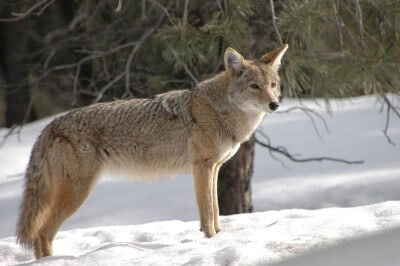
Coyotes
Coyotes are keen hunters that prefer to hunt alone. They can often be seen in the distance along farm fields and ditch banks during the day. But their hunting patterns typically peak at dusk. They can be very vocal at sunset which often spooks smaller game and domestic animals.
In most cases, coyotes have been known to feed upon poultry, fowl, and small domestic animals like cats and small dogs when other food is scarce.
Their evening calls tend to lure smaller animals out and away from the safe confines of home where they can fall prey to the coyote.
Coyotes tend to burrow into sidehills in the early morning hours and sleep during the day until they re-emerge at night.
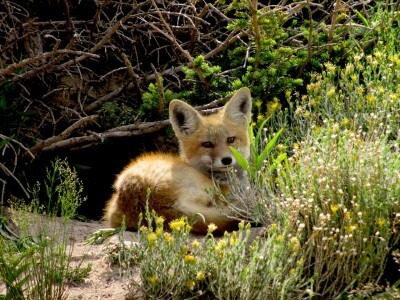
Foxes
Foxes, like coyotes, prefer the taste of poultry. But they may also add rabbit and quail to the menu. They are often cunning and tend to bypass coop security measures. They are silent and have been known to kill more than needed to survive.
Keeping a rooster around may sometimes act as a deterrent, along with larger domestic dogs who take on the responsibility of night guard.
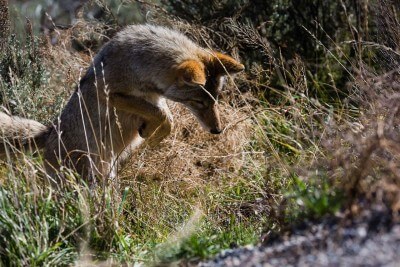
Jackals/Hyenas
More common in Africa and the Middle East, these predators are along the lines of Coyotes and wolves in the United States. Jackal behavior is much like the coyote and Hyenas hunt much like wolves. They often target small wild game but are also a threat to free range herds of sheep, goats, oxen and other livestock.

Domestic Dogs
Untrained domestic dogs may be a bigger threat to small homesteads than most people realize. Dogs off leash who encounter chickens, fowl, or rabbits may revert to instinct and kill without warning.
In some cases, dogs who are untrained or unfamiliar with farm animals will attack livestock during the day when they are exposed, vulnerable, and typically unsupervised. Baby rabbits and hens are especially vulnerable, so when having guests over with dogs, watch closely and be mindful.
Some ways to prevent loss due to domestic dogs include keeping your own dogs well trained as protectors and providing shelter for smaller flocks.
Marsupials
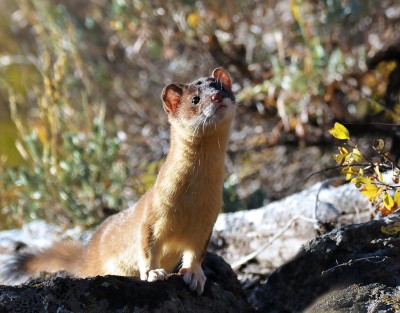
Weasels
Weasels are small but powerful hunters and generally chase after rodents like mice, voles and lemmings. However, they have been known to prey upon animals much larger than themselves, like ducks, rabbits and chickens.
They tend to follow into burrows or raid bird nests for the eggs. By keeping domestic defenders around, like cats or dogs, you may be able to prevent some losses of stock and eggs due to the weasel.
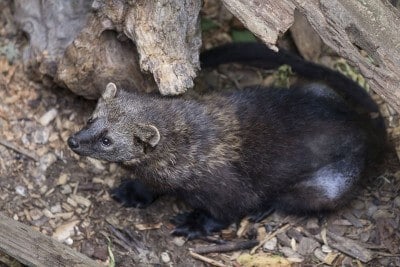
Fishers
Fishers are similar to weasels but larger. They’ve been known to take down other predators, like lynx, foxes and porcupines – some of which may be more than twice it’s size.
They’ve been known to hunt rabbit and small game and are native to the northeast United States and portions of eastern Canada. If you keep rabbits in these regions, you may want to keep a keen eye out for these skilled predators.
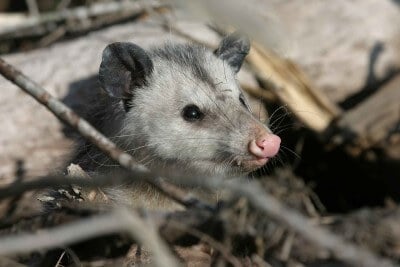
Opossum
The opossum is a lesser threat to the homestead, but has some characteristics that can cause major problems. They tend to scavenge for food and survive on scraps left behind by humans.
Opossum will eat anything from garbage to garden stock, but may also hunt chickens. This predator is known to carry rabies and could pose a threat to your dogs as a result of a bite.
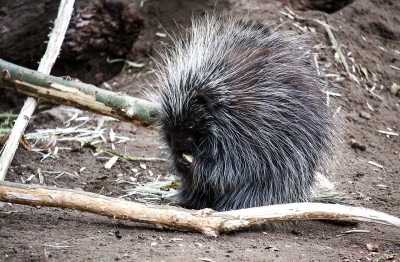
Porcupines
These near-sighted, slow moving predators are prone to devouring berry patches. While not a predator of your homestead livestock, they may still cause injury to house pets. They are attracted to salts and may be found lurking around salt licks, or sweaty leather work gloves or sweaty boots left outside.
They have several predators, but in most cases the predators will die as a result of punctures from their quills. Dogs who see the porcupine as a threat will often attack and wind up with a mouth full of painful quills that require medical attention.
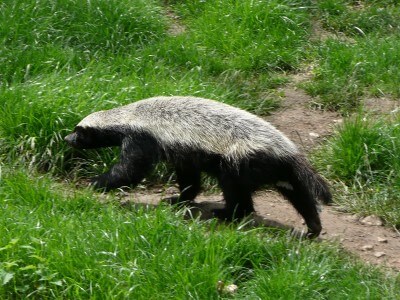
Honey Badger
As the name implies, this badger will raid honeybee hives. These animals hunt alone and generally live in the southern regions of Kalahari. They have been known to wreak havoc on apiaries (bee farms) in the process of building hives. They generally hunt at night by leaving their small in-ground burrows and use a keen sense of smell to detect their prey.
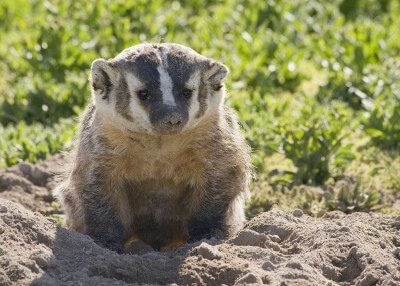
By Oregon Department of Fish and Wildlife – https://www.flickr.com/photos/odfw/7591227260/in/set-72157623595777676/, CC BY-SA 2.0, Link
North American Badger
The North American Badger is one of the top 10 most fearsome predators in the United States. They hunt on open grasslands and have a taste for rodents and small game, like prairie dogs, squirrels and rabbits.
They generally hunt alone with the exception of sometimes teaming up with Coyotes. So if coyotes tend to lurk around your chicken coop, be mindful that badgers may be following suit.

Ferrets
Ferrets were bred to hunt rabbits. Now, they are often bred as pets and in some cases still hunt rabbits where they are overpopulating. Ferreting, the act of using ferrets to hunt, is banned in the US and Portugal.
However, their skills and instincts may kick in and wreak havoc on your rabbit stock if a family pet or some other ferret in the neighborhood gets loose.

Wolverine
These powerful mammals stalk carrion but have been known to take down other animals much larger than themselves, such as deer, bison, caribou and even moose. They also threaten cattle, sheep and goat herds. They are remarkably strong for their size and tend to reside in Northern Canada and Siberia.
Reptiles
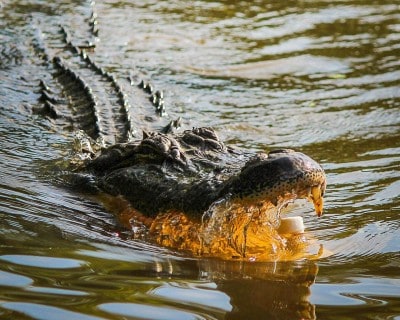
Alligators/Crocodiles
These massive reptiles can become a threat if flooding increases their territory near your homestead. They are fierce, quick, and skilled at sneak attacks against animals along the water banks.
If you keep ducks or geese, be mindful of flood warnings if you live in a region where these prehistoric hunters may be lurking. They’ve also been known to take down large game so if you have pigs or cattle, you should also be mindful of the borders of their pens during a flood.
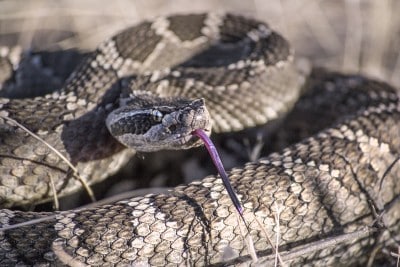
Snakes
While you may not expect boa constrictors to be a threat because of where you live, you may be surprised. Many boas are kept as pets until they get too large to feed and irresponsible owners tend to set them loose in the wild.
Some snakes may also raid nests for eggs, chicks, or even full-size chickens depending on their appetite. These snakes are more than capable of taking down and consuming large prey like goats, cattle and deer.
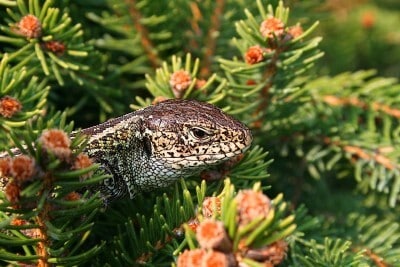
Lizards
Most lizards are content with living off of insects and spiders. But there are a few that prefer the taste of meat. The Gila Monster, native to the Southwest United States, generally feeds on small mammals, birds and eggs. Its bite is also poisonous and has been known to kill humans.
Larger lizards, such as the Malayan water monitor, can grow to nearly 9 feet and has been known to excavate carrion and human remains for food in addition to their diet of small mammals, fish, and birds. If you live in a region where exotic pets are allowed, be mindful of some of these around your homestead if they should get loose or be released.
Winged Threats
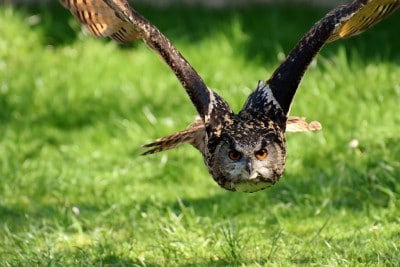
Owls – great horned, snow, barn
Owls are silent killers that can strike without warning. They often hunt at night, and their vision is impeccable. They generally hunt small rodents or other birds at night but may also hunt domestic rabbits. If rabbits are kept outdoors for food or pelts, be sure to keep them covered at night or in some form of cage.

Hawks/Falcons
Hawks and falcons tend to prefer small game and rodents. Quail, game hens and rabbits are easy targets for these predators. Most hawks will fly in concentric circles and let out a scream while hunting or after identifying their prey in order to flush them out from hiding.
Others will hover and wait for signs of movement before diving in. Attacks are often precise and instant. Adequate cages with heavy gauge wire can prevent some threats from overhead attacks, and sometimes domestic cats may deter some predatory birds.
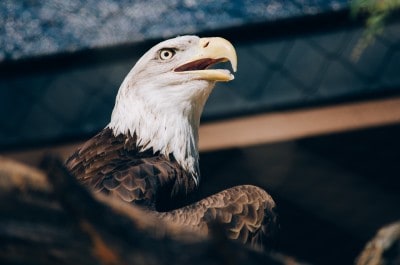
Eagles (Brown/Golden/Bald)
Eagles are excellent at hunting fish and small game. But they make no distinction between the wild and your homestead. Eagles are able to pluck game from the ground and fly off.
In some instances, they’ve been known to prey on small and medium-sized mammals like dogs or goats and, in rare occasions, they’ve been known to take down large game like mountain goats, deer or elk. When wild game is inaccessible or scarce, the homestead makes a prime target for a meal.
There are few ways to defend against an airborne attack, but one way to limit losses is to provide cover for livestock, such as lean-to structures or elevated pallets, etc. If you have livestock that is ill or recently dead, they may attract eagles, which will feed on carcasses.

Bats
Bats are a smaller winged threat and some forms of vampire bat will feed on exposed livestock, like cows, horses or oxen. While they don’t consume the entire animal, they may introduce bacteria, viruses or blood-borne pathogens that could be harmful or fatal.
These bloodsuckers make tiny incisions and latch on to livestock to feed at night. The small incisions can form sores and expose livestock to infection and disease.
Tiny Threats
Parasites
Parasites feast on your animals from the inside. The majority of animals on the homestead may come in contact, harbor and spread parasites of all kinds during normal day-to-day activities.
Unfortunately, these parasites can be transferred to humans in many cases if basic hygiene practices aren’t followed during handling, processing or storing meat. There are several methods for reducing parasite activity in living stock, but the best defense for humans is clean habit.
Felines
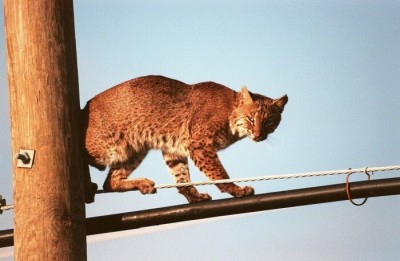
Bobcat
These cats typically hunt rabbit and due to urban sprawl have in some areas become common sightings even in urban areas. When food is scarce, they may resort to an easy meal on the homestead – or even your back yard. They have been known to kill deer, so it’s best to be mindful if you keep goats or similar-sized animals.
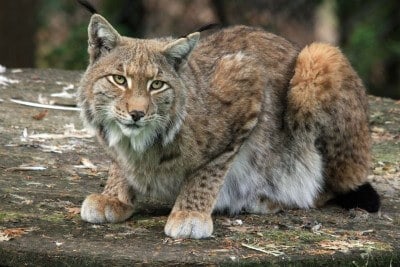
Lynx
Lynx will generally prey on wild animals. But some could trespass on your homestead if you keep ducks, rabbits, and other small mammals. These medium-sized cats typically hunt at night and are native to northern regions of the United States and the majority of Canada.
Their main diet is Snowshoe Hares, so if food supplies or famine takes out the wild hare population, keep a close eye on your own rabbit stock.

Mountain Lion/Cougar
Mountain lions have re-emerged as a significant threat to homesteaders as their habitats get pushed out by urban development and city dwellers move to more rural areas to establish homesteads.
These silent predators won’t hesitate to pick off stray animals, large dogs, or even humans if they see an opportunity. They are skilled hunters, can cover long distances and remain covert day or night.
If you see tracks, chances are you’ve been watched by this animal and your next action should be to call a game warden to report the sighting and keep a close eye on your herd, flock, and family.
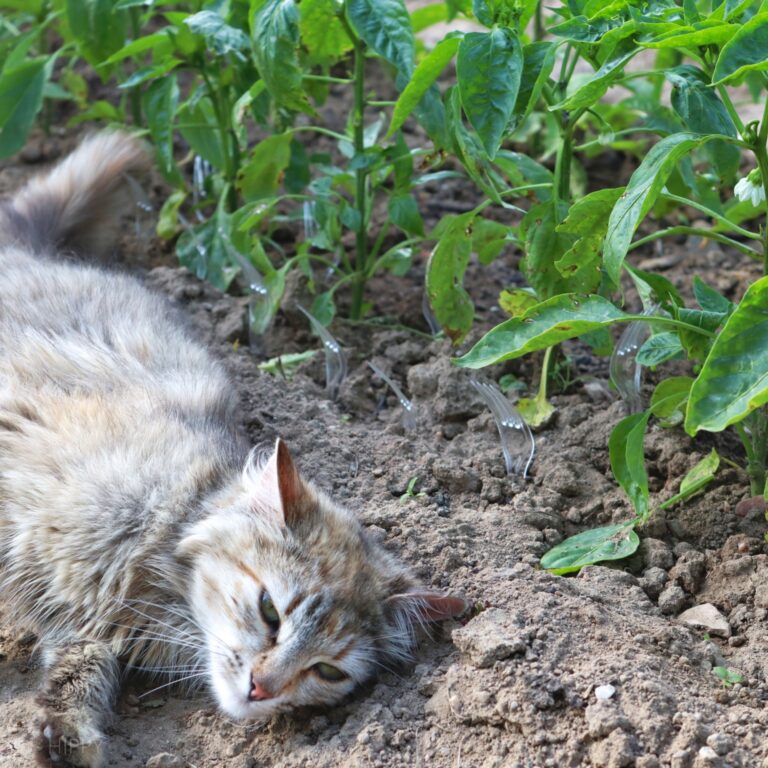
Large domestic cats
Domestic cats are some of the most skilled predators out there. Their kill ratios are nearly unmatched, and they are highly effective at taking down rodents and birds.
With this in mind, your barn cats may take advantage of newborn rabbits, ducks, geese, chickens, quail or game hens.
Most adult animals will protect the young until they are old enough to outgrow the cat interest, but you can take extra measures to keep your stock safe.
Separate small animals or bring them indoors. You may also introduce a guard dog to their living space to keep the cats at bay.
Large Game/Anti-predatory Animals

Moose
These generally mild-tempered mammals can be easily provoked and cause harm to humans attempting to defend their gardens from moose trespassers. They are fond of fruits like apples and berries and have the ability to climb or jump over tall fences and barricades.
An angry moose can cause severe damage to property and in some cases are deemed as dangerous as bears. There are some tell-tale signs that a moose is becoming irritated, and the best thing to do is back off – especially if it is a mother defending her calves.
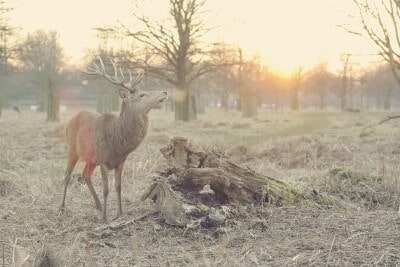
Deer
Deer have become commonplace in some urban communities that border forested or undeveloped wildland areas. While they pose no threat to livestock, they can devour garden produce overnight.
They are stealthy and have a knack for finding food even under several inches of snow. Dogs tend to keep them at bay and some fences work to keep deer out, but they must be fairly tall to be effective.
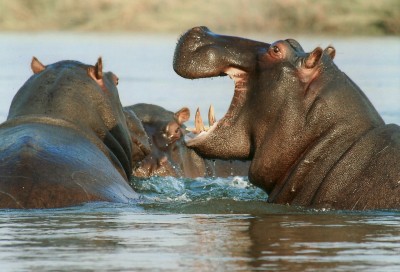
Hippopotamus
Hippos are typically mild-mannered, but they have a lethal nature if provoked. They are responsible for approx. 500 human fatalities in Africa every year, and they’ve been known to kill other predators, such as lions, crocodiles, hyenas and even sharks.
While widely known as herbivores, they have been observed eating their kills. If an African homestead is your thing, don’t be tricked by a close encounter.

Ostrich
These raptors generally eat small insects or mammals. They are extremely fast and have powerful legs that can hurt or even kill predators. They are very defensive of their eggs and hatchlings, so if you intend to raise ostrich, you may find it difficult to harvest the eggs.
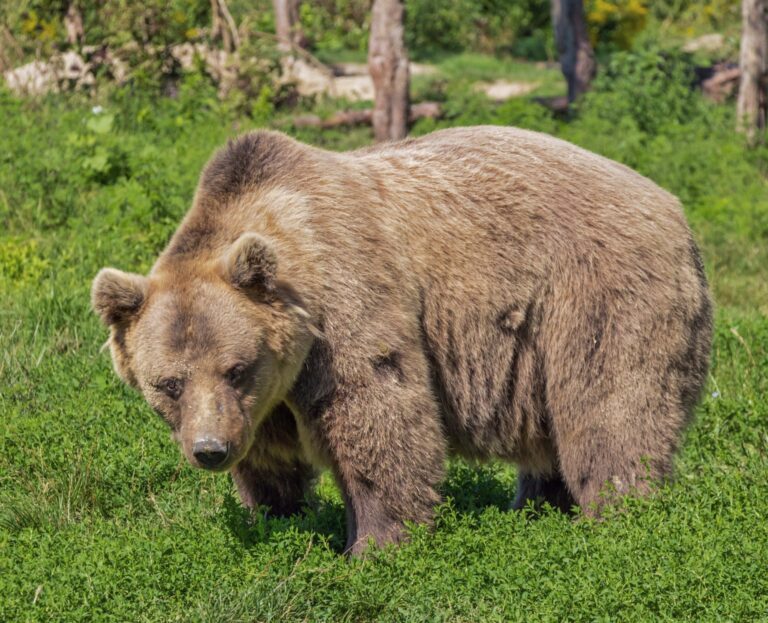
Bears
Brown Bears
Brown bears have been known to attack sheep depending on the availability of food sources. They generally eat smaller animals and may be attracted to ponds or rivers with fish.
They often teach their young to fish, so an encounter may become violent if the mother bear anticipates danger. A heavy majority of the black bear population – approx. 70 percent – are native to Alaska.
Black Bears
These bears tend to hunt honey bees and certain crops. They’ve also been known to raid garbage cans for food and in rare cases they may kill sheep or pigs if food is scarce.
Dogs may be a deterrent or warning signal if the black bear is getting too close to your livestock. They are native in almost all regions of the United States and Canada.
Grizzly Bears
Grizzly bears are perhaps one of the deadliest and largest of antipredatory animals in North America. They’ve been known to attack hunters, outdoorsmen and trappers.
While they tend to feed on berries and river fish like salmon and trout, they do pose a risk to homesteads with water sources like streams running through or near the property. If you keep ponds stocked with fish, you may want to run tripwires tied to bells to signal if this predator comes through your property.
If you do spot a grizzly on your property, keep your family inside, keep dogs and livestock away to prevent instigating an attack, and contact your game warden so the bear can be tranquilized and relocated.
Mankind
Neighbors
You wouldn’t think neighbors would be a predator, but there’s a good chance they may look at your homestead animals as a resource for their own benefit. While you strive to keep your animals alive, happy and healthy, a neighbor with bad intentions could take advantage of your hard work.
Building relationships with neighbors and strengthening community can help as others look to help protect your livestock when you’re not available. Even homesteads – and every animal on them – can benefit from a simple neighborhood watch.
Travelers
If you live near a busy road or highway, you could face the potential of losing some of your flock to four-wheeled predators. While not intentional, many travelers have run over or hit livestock during regular vehicle commutes. These accidents take a toll on your head count.
If you have animals with a knack for getting out, the best defense is an effective fence. Goats, pigs, cattle and sheep may find a downed section of fence and funnel through in search of green grasses on the other side. Provide solid barriers and warning signage to keep your animals from becoming roadkill.
Strangers
Homesteads located within eyeshot of major highways may be too exposed. Strangers may see an opportunity to plunder from your pasture. You may have done everything in your power to keep animals reined in, safe, and secure, but this type of predator can bypass almost every protective measure you’ve put in place.
To keep your livestock safe and secure from strangers with bad intentions, consider mounting game cameras and keeping well-trained protective animals nearby. Large dogs, llamas and even horses can be effective guardians while other animals, like roosters, donkeys and small dogs can help sound an alarm if an intruder approaches.
TOO MANY PREDATORS TO REMEMBER? USE THE ‘PIN’ BUTTON ON THE IMAGE BELOW TO PIN THIS ARTICLE TO YOUR FAVORITE PINTEREST BOARD!
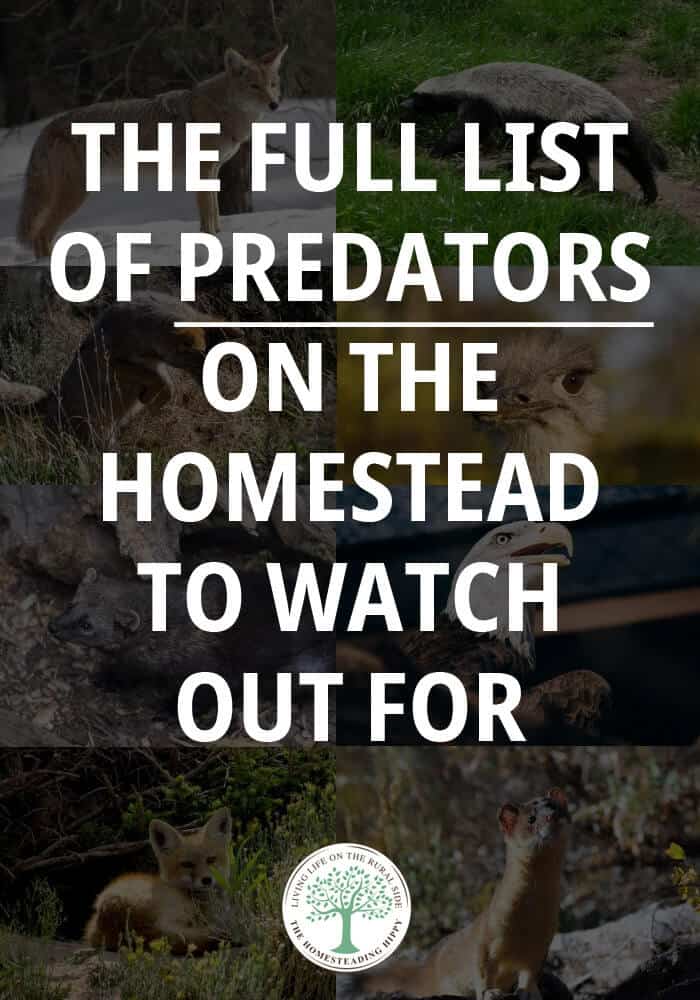
D. Ryan Buford is a professionally trained writer and journalist from the Pacific Northwest region of the United States. He currently hosts “The Next Generation,” a live, weekly internet radio show on Prepper Broadcasting Network that focuses on parenting and preparedness. Learn more about our team here.
As an advocate of the preparedness and homesteading world, Ryan left behind a successful, fast-paced urban job for a more sustainable life among farm fields, wildlife and family. In addition to leading a self-sufficient life, he writes as a freelancer and maintains a blog and magazine at www.dryanbuford.com.

I read somewhere that opossums do not carry rabies and its extremely rare for them to get rabies due to their body temp is too low for the virus to survive.
Thanks for the list, its helpful!
Feral hogs have become a serious problem in rural Texas, they enthusiastically eat any and everything from romaine lettuce to corn to free range chickens, tear up feeding stations, make big wallows, party in stock tanks…however, there are no restrictions on trapping them and no matter what else they may be, in the end they are bacon, and bacon is good.
I’ve heard about this recently. As a localized danger, it’s important to recognize that overpopulation of any species can create a hardship to the homestead. Nevertheless – the wild pig problem may prove the tastiest predator that didn’t make I t on this list…thanks for the comment!
The only marsupial in North America is the opossum. The others listed are not marsupials and belong to other classifications.